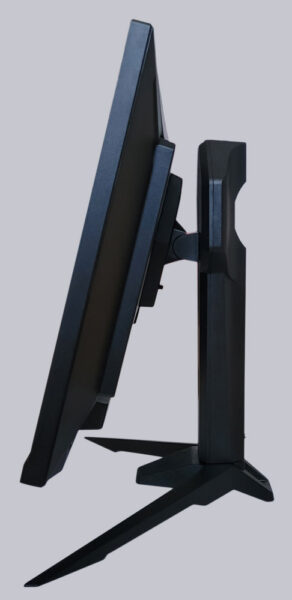
Layout, design and features …
The rear of the flat 27″ display in 16:9 format, which offers a resolution of 2560 x 1440 pixels, has a simple design. There are no oversized logos or LED lighting. The supplied stand or alternatively a separately available VESA 100x100mm standard monitor mount can be attached in the middle. The power button and the 4 control buttons are located at the rear left, whereby the power button has a small, raised dot to make it easier to distinguish from the control buttons. Everyone will have their own personal opinion about the controls on the back, but after a certain amount of time getting used to them, you won’t get lost too often when using the monitor’s menu. A small joystick on the back or small buttons on the bottom edge of the screen would have been just as inconspicuous, but much more convenient to use. Capacitive switches were probably not feasible in terms of price, but ASRock has even equipped the PG27QFT2A with 2 small speakers. They radiate downwards and offer up to 2 watts of power per channel.
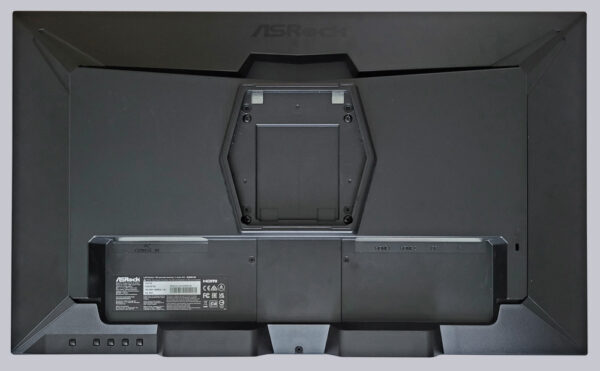
Before the PG27QFT2A can be put into operation, the stand, which consists of two parts, must be fully assembled. This is done simply by tightening a screw, for which no tools are required. The stand weighs around 2.25 kg and its three legs ensure that the monitor stands securely. A Phantom Gaming logo floats in the middle of the front area just above the base, but is not illuminated. The display is locked in place using a delicate plastic element that snaps into place cleanly and without complications.
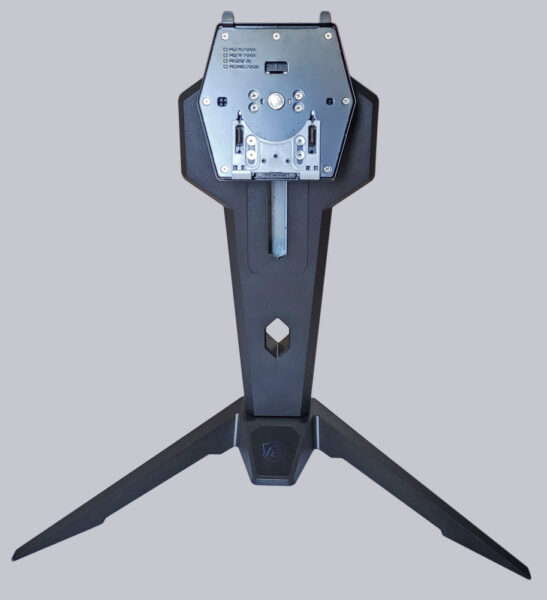
The adjustable foot offers easy-to-use height adjustment with a comfortable 100 mm adjustment range.
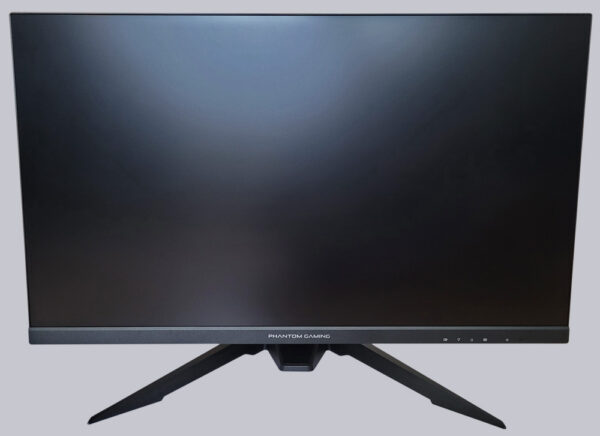
The lower edge of the matt display, which appears almost frameless at the top and sides, reaches a height of 76mm to 176mm above the installation surface.
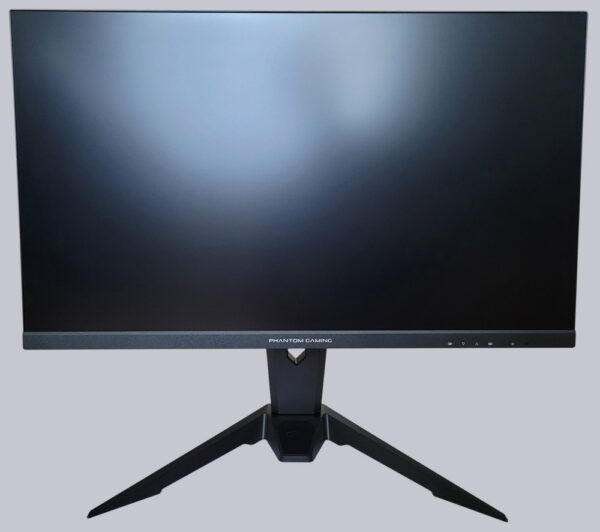
The stand also offers a forward tilt range of 5° …
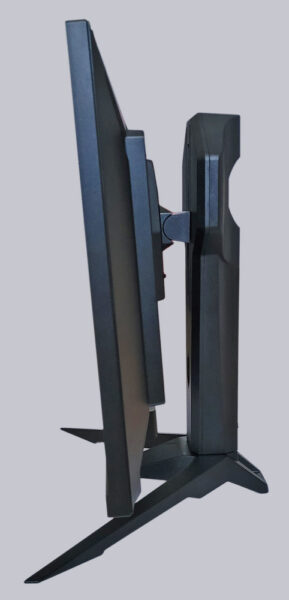
The PG27QFT2A does not offer a pivot function, but the display can be rotated 20° to the right and left.
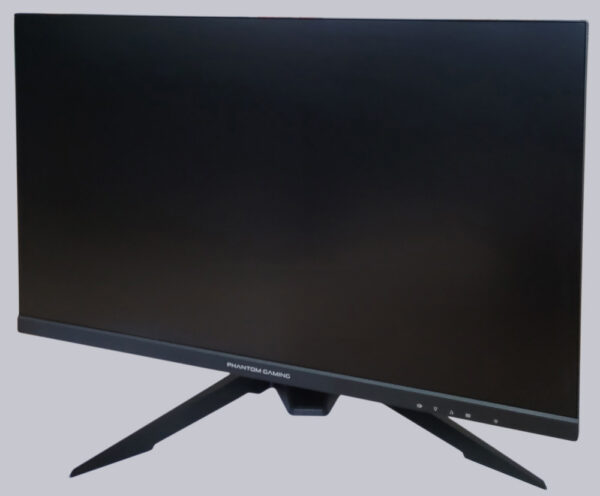
On the connection side, the ASRock gaming monitor offers two HDMI 2.0 sockets and a Displayport 1.2 as well as a 3.5mm audio socket on the right when viewed from behind, all of which are directed downwards. However, the full 180Hz refresh rate can only be achieved via the Displayport. A maximum of 144Hz is possible via HDMI, even though the operating instructions promise 180Hz via HDMI. Unfortunately, a mistake has crept in. The Kensington lock is nice to have, but it is less important for gamers.
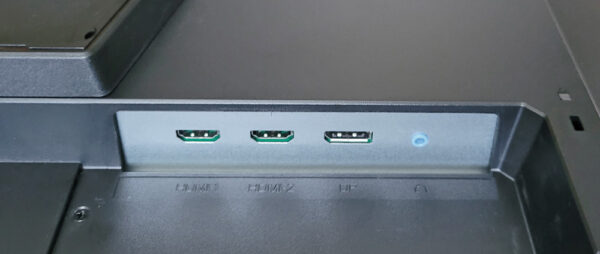
The power socket also faces downwards and is located at the rear left. The PG27QFT2A does not have a cable cover, but there is a hole in the stand to bundle the cables and a Phantom Gaming cable sheath is also included. The PG27QFT2A does not have an integrated USB hub and image transmission via USB-C is unfortunately also not possible.

We find a special feature on the back of the stand. Not only the display itself offers connection options, but also the stand. There are two antenna connection sockets in the lower section of the column, which is clad with striking plastic panels. However, these are not sockets for connecting antennas. The antennas are integrated into the stand and can be connected to a Wi-Fi or Bluetooth card using the enclosed antenna cables. This makes the PG27QFT2A a great way to connect the PC’s Wi-Fi card to antennas that don’t take up any more space on the desk surface, but provide a significant signal improvement compared to antennas plugged directly into the PC. If the antennas were integrated into the display, you could also use the antennas if you don’t want to or can’t use the stand.
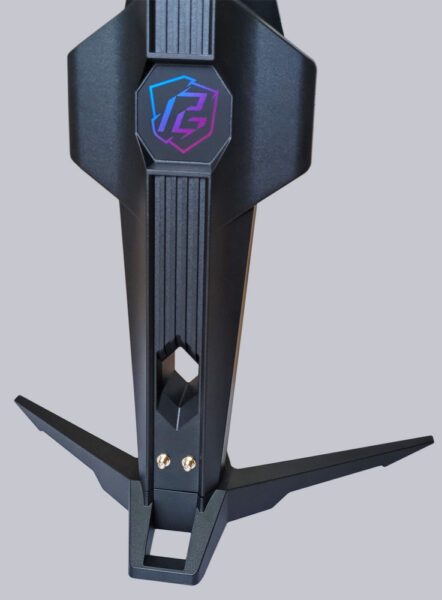
ASRock PG27QFT2A Practical testing …


